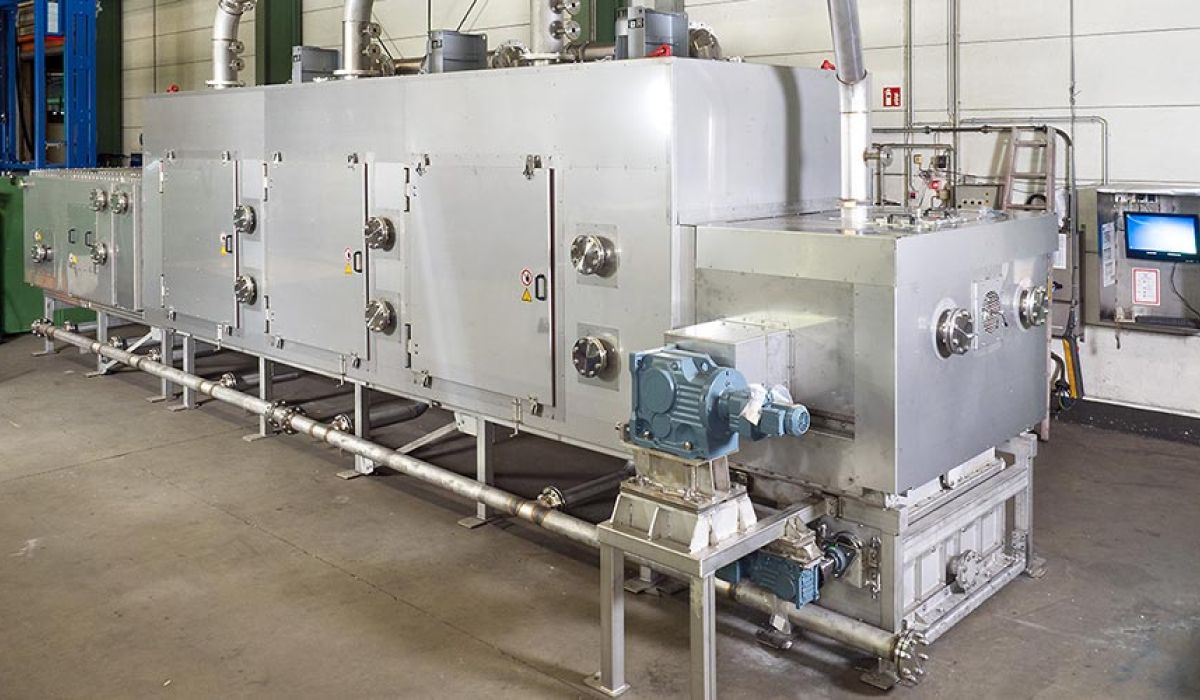Often you have projects in which not the plant itself but the story behind it is the interesting one. This is quite true for a current belt dryer project.
The dryer should be tight
The unit is a medium-sized belt dryer for bulk material. One of the basic requirements of the dryer is dust tightness. In addition to design measures, the dryer housing must be adequately welded and doors or flaps must be specially sealed. As far as these are all standard instruments for a dryer development. The tightness test (B4 helium sniffing test according to EN 1779) was then but something special.
Helium leak test or helium leak detection
The tightness was tested during the FAT (Factory Acceptance Test) by means of a helium leak test. Helium is introduced into the dryer and an overpressure is generated. Measurements are made using a so-called sniffing probe. This is held on weld seams or other potential problems. In the event of a leak, the probe detects escaping helium. The selective measuring method allows detection with a very good local reference, so that leaks can be locally detected and quickly eliminated.
In the case of the belt dryer, all cleaning and maintenance flaps, bulkhead seals, covers, shaft feedthroughs, eyeglasses and flanges were tested for tightness.
Why Helium?
In the specific case, a helium leak test has been chosen since it offers some advantages. The local detection of leakages has already been mentioned. In general, however, helium is also a rare gas, which occurs on the one hand in normal air in only small quantities (this makes it possible to measure an increased concentration easily), and on the other hand, because it is a noble gas, no chemical reaction with other substances which could then falsify the result.

